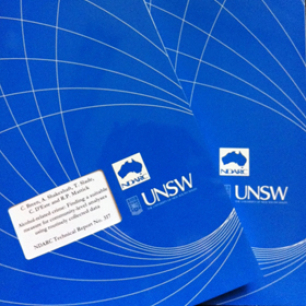NDARC Technical Report No. 202
EXECUTIVE SUMMARY
In Australia ecstasy is the third-most popular illicit substance (after cannabis and amphetamines), with patterns of increasing use compared with other illicit drugs over the last 5 years. Given the potential risks associated with ecstasy use, the provision of accurate prevention or harm reduction information is imperative in reducing drug-related morbidity and mortality. In providing this information, it is likely that the credibility of information sources will be crucial in users’ perception of the information. Knowing which information sources are deemed credible will aid the efficacy of prevention or harm reduction efforts, as they can ideally be concentrated toward the more credible information sources.
This study recruited 216 ecstasy users, the majority of whom were from the Sydney metropolitan area. Generally, this sample was young, well educated, and likely to be in some form of paid employment. Males were slightly overrepresented within the sample. Consistent with similar recent studies, the average frequency of ecstasy use for this group was about ten days in the last six months, although this ranged from one day in the last six months to four days per week.
Participants had used a variety of information sources, although particularly low usage rates were recorded for family members, government sources, libraries and the police. Friends were overwhelmingly the most popular usual source for ecstasy information, followed by the Internet, dealers and print media. Friends were also rated among the more accessible of information sources, with the Internet and print media also rating highly. The police and the government were sources that received lower average accessibility scores. Friends were also deemed to be the source from which participants felt most comfortable acquiring information. Other sources that received relatively high comfort ratings included dealers, doctors and drug counselling hotlines. The more credible information sources included drug counselling hotlines, doctors, libraries and friends. Parents were judged as the least credible source, with siblings, school teachers, videos/movies, police and government all perceived as being not particularly credible.
The sample also identified four specific sources of information that they did not believe: government agencies, the police, drug dealers and the media. Information from the police or government agencies was generally not believed, because participants felt that these authorities held an anti-drug agenda, and were likely to focus only on the adverse effects of the drug. Facts acquired from the media were usually considered unreliable, as users felt that they were often sensationalised and distorted for the purpose of ‘selling a story’. All participants who nominated drug dealers believed that they were likely to be biased in the information they provided, as they possessed a vested interest in selling their product.
When asked what information they acquired from these sources, five categories were outlined: general effects; side effects; personal experiences; purity/quality information; and safety information. Facts on possible side effects were the most popular type of information sought along with general ecstasy effects.
Friends and siblings were used to acquire information on a variety of topics, including their opinion of the purity or quality of the ecstasy pills, information on the general effects or side effects of ecstasy, as well as personal experiences and safety information to a lesser extent. Dealers and the Internet were mainly used for information regarding the purity or quality of ecstasy pills. Participants mainly used doctors for information pertaining to side effects, particularly around issues relating to potential harms arising from combining ecstasy and related drugs with pharmaceuticals or the consequences of using drugs.
About two-thirds of the sample felt that ecstasy information should be presented to the entire community and almost a third believed information should be specifically aimed at school students. Smaller groups of participants felt that ecstasy information campaigns should be targeted at specific groups such as drug users or the gay community.
Many participants felt that ecstasy information should primarily incorporate a message of harm reduction. A smaller group believed that all effects of ecstasy should be presented in a balanced fashion and that ecstasy use should not simply be discouraged without adequate justification. A small minority believed that ecstasy information campaigns should focus solely on the adverse effects of ecstasy or its potential dangers.
Considering the problems associated with government and law enforcement credibility with this sample, those sources, as well as dissemination through the mainstream media and/or family members do not appear to be effective methods of information delivery, particularly in regards to ecstasy and related drugs.
The findings of this project suggest a number of promising approaches to the reduction of harm associated with the use of ecstasy and related drugs in the Australian community. These include judicious use of the frequently accessed internet sites for the dissemination of information on high risk behaviours and warnings on specific issues; the development and evaluation of peer networks for the dissemination of harm reduction information (including accessing interventions); and the training of medical practitioners and drug hotline staff in their role as highly credible sources of health-related information on ecstasy and related drugs.
Citation: Gascoigne, M., Dillon, P. and Copeland, J. (2004) Sources of ecstasy information: Use and perceived credibility, Sydney: National Drug and Alcohol Research Centre.


